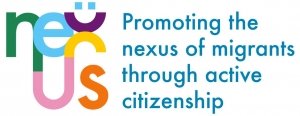Quién manda? / Who rules?
Quién manda? Who rules? is a map of public-private power networks in Spain, a reliable and documented repository of ties between the most influential people in the country.
Tool Self-Assessmet
- Reflect back on the objective of the tool you built: did you exceed it, or fall short? If so, why?
Who rules? is a map of public-private power networks in Spain. Its aim is to present a reliable and documented repository of ties between the most influential people in the country -based only on official sources- to demand more transparency in lobbying and decision-making. Users can explore this huge database through interactive network graphs, a photo section with tagged protagonists, and journalistic investigations that give shape and context to all this information.
The aim of this tool was to expose aspects of corruption, power, revolving doors, the possible impact objective was to regulate the aspect of lobbying and the publication of politicians’ agendas.
- What are the tools’ metrics for success and what does metric say – how well did the tool do?
It was a bit of an unmanageable project because of the data aspect, which was difficult to manage. We couldn’t leave it very open because of the reliability of the data. And since we had to handle all of it ourselves, it was very difficult to manage. Because of this and the lack of user engagement, we do not consider it to have been such a success story.
- Were your assumptions that the tool you built would: increase participation/engagement or tackle an issue/raise awareness correct? Do you think you chose the right approach – and what would you do differently?
The idea was to be very visual, e.g. citizens sending in a photo of politicians and business people (e.g. in a football stadium box/lounge), but it didn’t work, so in the end there was very little engagement from citizens, and in the end the use was more passive (they read a lot about the publications, but didn’t participate).
- Did your tool deliver what you were hoping for? Are they useful for your key user audience? Are they being adopted?
In terms of legislative impact, we made an impact: from the data we collect here, we can produce and publish research on aspects such as why it is not possible to know who the ministers’ advisors are, regulation of lobbying, etc.
So at the advocacy level, it did work to open the door to what they are working on now in terms of data journalism.
There is also an open source tool that came out of this that is used by many people in other countries, which is used to make networks of any kind, which was designed for power networks, but can be used for any function: ONODO.ORG
Tool ID
- GOAL:Demand for more transparency in lobbying and decision-making
- Made by:Civio (contacto@civio.es)
- Country:Spain
- YEARS ACTIVE:Ongoing


